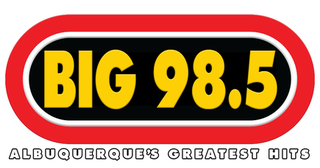
Los Alamos National Laboratory is one of the sixteen research and development laboratories of the United States Department of Energy (DOE), located a short distance northwest of Santa Fe, New Mexico, in the American southwest. Best known for its central role in helping develop the first atomic bomb, LANL is one of the world's largest and most advanced scientific institutions.

Albuquerque, also known as ABQ, Burque, and the Duke City, is the most populous city in the U.S. state of New Mexico. Founded in 1706 as La Villa de Alburquerque by Santa Fe de Nuevo México governor Francisco Cuervo y Valdés, and named in honor of Francisco Fernández de la Cueva, 10th Duke of Alburquerque and Viceroy of New Spain, it served as an outpost on El Camino Real linking Mexico City to the northernmost territories of New Spain.

Sandia National Laboratories (SNL), also known as Sandia, is one of three research and development laboratories of the United States Department of Energy's National Nuclear Security Administration (NNSA). Headquartered in Kirtland Air Force Base in Albuquerque, New Mexico, it has a second principal facility next to Lawrence Livermore National Laboratory in Livermore, California, and a test facility in Waimea, Kauai, Hawaii. Sandia is owned by the U.S. federal government but privately managed and operated by National Technology and Engineering Solutions of Sandia, a wholly owned subsidiary of Honeywell International.

Alceste, Wq. 37, is an opera by Christoph Willibald Gluck from 1767. The libretto was written by Ranieri de' Calzabigi and based on the play Alcestis by Euripides. The premiere took place on 26 December 1767 at the Burgtheater in Vienna.

Der Schauspieldirektor, K. 486, is a comic singspiel by Wolfgang Amadeus Mozart, set to a German libretto by Gottlieb Stephanie, an Austrian Schauspieldirektor. Originally, it was written because of "the imperial command" of the Holy Roman Emperor Joseph II who had invited 80 guests to a private luncheon. It is regarded as "a parody on the vanity of singers", who argue over status and pay.

Santa Fe Opera (SFO) is an American opera company, located 7 miles (11 km) north of Santa Fe, New Mexico. After creating the Opera Association of New Mexico in 1956, its founding director, John Crosby, oversaw the building of the first opera house on a newly acquired former guest ranch of 199 acres (0.81 km2). The company has presented operas each summer festival season since July 1957, and is internationally known for introducing new operas as well as for its productions of the standard operatic repertoire. Five operas are presented each season during the summer.

The Visualization Toolkit (VTK) is a free software system for 3D computer graphics, image processing and scientific visualization.
John O’Hea Crosby was an American musician, conductor and arts administrator. He was the founding general director of The Santa Fe Opera, a company he oversaw for 43 years.

Richard Gaddes was a British opera company administrator based in the United States.
An electronic libretto system is used primarily in opera houses and is a device which presents translations of lyrics into an audience's language or transcribes lyrics that may be difficult to understand when sung.

KABG is a commercial radio station licensed to Los Alamos, New Mexico, and serving the Santa Fe and Albuquerque radio markets. It is owned by American General Media and airs a classic hits radio format, playing Top 40 hits mostly from the late 1970s to the early 1990s. The radio studios and offices are located in Northeast Albuquerque.

In computing, multi-touch is technology that enables a surface to recognize the presence of more than one point of contact with the surface at the same time. The origins of multitouch began at CERN, MIT, University of Toronto, Carnegie Mellon University and Bell Labs in the 1970s. CERN started using multi-touch screens as early as 1976 for the controls of the Super Proton Synchrotron. Capacitive multi-touch displays were popularized by Apple's iPhone in 2007. Multi-touch may be used to implement additional functionality, such as pinch to zoom or to activate certain subroutines attached to predefined gestures using gesture recognition.
The word titling, in the performing arts, defines the work of linguistic mediation encompassing subtitling and surtitling.

KOAZ is a radio station licensed to Vanguard Media LLC. at Isleta Pueblo, New Mexico. It is operating at "Isleta" with 5,000 watts daytime and 25 watts nighttime, from 34°58′46.2″N106°44′15.1″W. The station serves the Albuquerque Metropolitan area. Its studios are located in Northeast Albuquerque.
Miriam Gauci is a Maltese operatic soprano, particularly associated with lyric Italian roles.

Anthony Michaels-Moore is an English operatic baritone and the first British winner of the Luciano Pavarotti International Voice Competition. Michaels-Moore has since performed in many of the world's major opera houses across Europe, the Americas, and Asia. He has distinguished himself as a specialist in Verdi and Puccini roles, most renowned for his portrayals of Falstaff, Nabucco, Rigoletto, Simon Boccanegra, Iago in Otello, Germont in La traviata, Sharpless in Madama Butterfly, and Scarpia in Tosca. In addition to the standard repertoire, he has sung and recorded the baritone roles of some of the less-known 19th Century Italian operas, as well as the popular English art song cycles by Stanford and Vaughan Williams.

Surtitles, also known as supertitles, Captitles, SurCaps, OpTrans, are translated or transcribed lyrics/dialogue projected above a stage or displayed on a screen, commonly used in opera, theatre or other musical performances. The word "surtitle" comes from the French language sur, meaning "over" or "on", and the English language word "title", formed in a similar way to the related and similarly-named subtitles. The word Surtitle is a trademark of the Canadian Opera Company.

Mark Edwin Kriegsman is an American entrepreneur, computer programmer, inventor, writer, and former Director of Engineering at Veracode.
Radio Marconi is an Italian-based company that has installed and serviced audio-visual and radio equipment since 1993. It designs interactive multimedia communication systems. The company has also developed several applications for theaters, conference centers, museums and stadiums. During its lifespan, the company has become a service center for brands such as Sony, Sennheiser, Neumann, and Televic, with customers based in radio, television, theater, public authorities and security forces.
The term multilingual titling defines, in the field of titling for the performing arts, the chance for the audience to follow more than one linguistic option.













